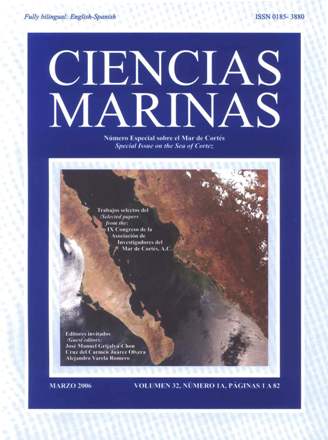Genetic variability and differentiation in cultured white shrimp Penaeus (Litopenaeus) vannamei with low and high growth
Main Article Content
Abstract
To find a relationship between allozyme heterozygosity and body size in cultured white shrimp, Penaeus (Litopenaeus) vannamei, a sample was taken at the end of an experimental culture; 72 small organisms of 7.1 ± 1.35 g average weights, and 72 large organisms of 17.5 ± 1.34 g average weights. Ten enzymatic systems were analyzed. Eighteen loci showed good resolution for genetic interpretation. Only EST-2*, EST-3*, EST-4*, EST-5*, and PGM* were polymorphic. Variability values (mean observed heterozygosity, mean number of alleles per locus, and polymorphism) for small shrimp were 0.029 ± 0.020, 1.5 ± 0.20, and 22%, whereas for large shrimp were 0.020 ± 0.010, 1.7 ± 0.20, and 28%. No significant difference was found in heterozygosity for both size-classes. All loci were out of Hardy-Weinberg equilibrium because of a heterozygote deficiency and high inbreeding values. EST-2* and PGM* showed differences in allelic frequencies among both size-classes, and an Fst value of 1.6% was recorded. Both size-classes have a different genetic population structure. Because of the poor information of the analyzed loci and to corroborate that EST-2* and PGM* are involved in growth, it would be necessary to follow the inheritance of those loci in successive generations.
Downloads
Article Details
This is an open access article distributed under a Creative Commons Attribution 4.0 License, which allows you to share and adapt the work, as long as you give appropriate credit to the original author(s) and the source, provide a link to the Creative Commons license, and indicate if changes were made. Figures, tables and other elements in the article are included in the article’s CC BY 4.0 license, unless otherwise indicated. The journal title is protected by copyrights and not subject to this license. Full license deed can be viewed here.

